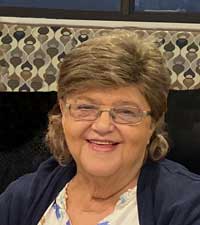The Chelsea City Council got its first look at proposed city utility rates as part of a utility rate study that was prepared by city staff and reviewed by Plante/Moran, the city’s audit firm.
Included in the study is a look at the city’s enterprise funds, namely water, wastewater and electric, and it’s a study that’s done about every three years, said City Manager John Hanifan.
Calling the study “a glorified spread sheet, it’s pretty much static as to what goes into a rate,” he said, adding that both the city’s water and sewer funds had debt service payments for 20-year bonds for upgrades that were done to both systems.
“I want to underscore that this is proposed, and this is the time to ask questions,” he told the City Council Tuesday night.
“It’s a very basic rate study,” he said. “There’s no magic or mystery to it; it’s basic.”
Hanifan said that the study was the beginning of a policy document that’s up to the City Council to approve … “if the city council decides not to have an increase, then we’ll adjust accordingly.”
As part of the study, there were staff recommendations for increases in rates for all three utilities.
There are proposed 3-percent increases in water rates, a 12-percent increase in wastewater (sewer) rates and a 2-percent increase in electric rates — all of which will be discussed further during the budget process, which is just getting underway.
Two city residents spoke to the City Council prior to the rate study discussion and asked the elected officials to reconsider any utility rate hikes.
Jeff Blazok said Chelsea’s water rates are among the highest in the area and asked how this trend could be capped.
He said water rates went up 3 percent and sewer rates went up 18 percent last year and now there is a proposal to increase them another 3 percent and another 12 percent this year.
“Would you continue to shop or dine at a location that increased their prices 36 percent in one year?” he asked.
Denise Cugliari, another Chelsea resident, told the City Council that she fears another rate hike could have a devastating effect on the Chelsea School District’s millage renewal, which is on the May 7 ballot.
She asked the City Council not to raise rates again because for people with fixed incomes this might make them vote against the school millage.
“You could jeopardize the greatness of this city,” she said referring to its education system.
“Please do not increase taxes and utilities … we can’t take much more,” she said.
Council Member Rod Anderson questioned a number of components of the rate study including the impacts of the new Chelsea Community Hospital expansion and the new Chelsea Milling grain elevators, which he said were not “quantified” in the report.
He also asked why projections are provided only for revenue, but not for use in the water and wastewater enterprise funds.
He said none of the fund balances are shown, only annual changes, and there wasn’t a comparison of current or projected fund balances or a comparison to neighboring utility rates.
In sum, he said there was no basis provided for any of the proposed rate increases.
Calling the city’s utilities “a monopoly,” Anderson wanted to know why, exactly, “Chelsea water costs more than 1 cent per gallon?” which he noted is well above the costs of neighboring water and sewer systems based on a study provided last year to the City Council and compiled by staff in the Village of Clinton.
Anderson also asked for the costs involved in leaving the reverse osmosis water system online and what the costs would be if it were turned off.
Kim Garland, the city’s administrative director, provided the numbers for each fund’s undesignated cash balance account.
“Undesignated means not set aside for debt service payments or other specific purposes,” Garland said.
The water fund has a goal of 60 percent of its revenues or $1.1 million, and as of Feb. 28, this fund has $668,000 in it.
The wastewater fund has a goal of $2 million and as of Feb. 28, there is $338,000 in it.
The electric fund has a goal of $3 million and as of Feb. 28, there is $1.5 million in it.
These targets are discussed every year as part of the budget process, Garland said, adding that each year there are targets, which are clear, and agreed to by the general consensus of the current City Council.
These goals are something that we want to work toward to keep the funds well stabilized, she said.













